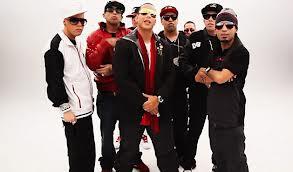This week we will be writing a three-part blog series on music in Latin America. The blog will be divided into; (1) The origins and influences of musical styles in Latin America, (2) Current music in a variety of Latin American countries, (3) Exploring Argentine music.
THE ORIGINS AND INFLUENCES OF MUSICAL STYLES IN LATIN AMERICA (PART ONE)
Latin America is comprised of those countries in the Caribbean, Central, South and North America (Mexico) where Spanish and Portugese are the official languages.

Latin America
CARIBBEAN
- Cuba
- Dominican Republic
- Haiti
-
Puerto Rico
CENTRAL AMERICA
-
Costa Rica
-
El Salvador
-
Guatemala
-
Honduras
-
Nicaragua
-
Panama
-
Belize
NORTH AMERICA
- Mexico
SOUTH AMERICA
- Argentina
- Bolivia
- Brazil
- Chile
- Colombia
- Ecuador
- Paraguay
- Peru
- Uruguay
- Venezuela
Firstly, it is important to know that the vast genres of Latin American music were highly influenced by European colonization and the slave trade with Africa.

Brazilian drum show
The styles of Latin music are amalgamations of cultural influences, namely European, specifically from the Spanish of which the Moorish empire had left a huge cultural imprint. The Moors were the medieval Muslim inhabitants of countries including Morocoo, western Algeria, Western Sahara, Italy, Malta and their Iberian territory Al-Andalus, an area comprising Gibraltar, much of what is now Spain and Portugal, and part of France. The Moors were known for their rich musical expressions, use of guitars (in which the classical Spanish guitar originated) and many song types and verse structures of which after their defeat, were adopted and integrated into the Spanish music culture and furthermore developed over many years. Many other Moorish integrations contribute to Spain’s cultural growth and there always have and always will be close correlations between the two cultures because of their history which was shared for more than 400 years.

Moorish music
One of the most obvious observations of European influence on Latin American music would be of course that the majority of Latin vocals are sung in either Portugese or Spanish. As the first Spanish Conquest with Christopher Columbus came in 1492, and later the Portugese Conquest of Brazil in 1500, also came the development and spreading of the Spanish and Portugese languages in the Americas.

Christopher Columbus
Spanish and Portuguese have persisted long after Portugal and Spain gave up their colonies though, and the languages lent a unique cohesion to the mosaic of musical styles in the region. A Spanish instrument that has played a key role for many years is the güiro. It is constantly used in Latin-American music and is used in rhythm section of important genres like cumbia and salsa.

A guiro, Spanish instrument
Putting the language factor aside, it is important to remember that the indigenous people of the New World had their own music. For instance, the Maya culture produced all kinds of percussion and wind instruments. All kinds of flutes were made all over the American continent and fortunately, this original expression has persisted to date in traditional Latin music like South America’s Andean music.

Andean music
The African slave trade that started during the early stages of exploration and settlement, brought approximately 12 million Africans (of whom many were also of Moorish descent) to the Americas between the 16th and 19th century.

Slavery in Latin America
The act of drumming back in Africa had long been recognized as a spiritual act and consequently was very common in religious ceremonies. Another amazing use for the drums was for communicative purposes and often codes were used to be played over long distances for the sending and receiving of messages. The most common form of using drums was just for the pure joy and allowed for free-form dance. The slaves brought this mentality and craftsmanship with them over the ocean and were fortunately allowed by their owners to liberally play their drums, one of the only rights they were able to receive and therefore played with much passion and gusto.

Slaves drumming
Because of the busy ports in places like New Orleans and Louisiana where many ships would stop for trading and supplies, slaves who were musically-inclined on the Caribbean ships were able to exchange new rhythms, dances, and songs among slaves from neighbouring ships. This, through the centuries gave birth to a rich cultural mix between the African slaves and native population- a distinct Moorish or commonly referred to as Afro-Caribbean culture. African musical influences include:
-
syncopations (offbeat accents) and cross-rhythms
-
use of percussion
-
call and response group singing style
-
singing styles
During the the 17th and 19th centuries in particular, these Afro rhythms developed and spread throughout the Caribbean. This music was traditionally played or accompanied by native percussion and string instruments, namely the timbales, congas, bongo, guitar, and the tres (nine-string Cuban guitar).

African instruments
Every country and every island in the Caribbean developed its own unique musical culture, many musical styles of which are very well-known today and tie-in very closely with some Brazilian styles:
-Bolero
-Son
-Plena
-Bomba
-Bachata
-Reggae
-Ska
-Zouk
-Samba
-Salsa
-Merengue
-Timba
To tie in from influences from many years ago, we must acknowledge African-American music and how it has influenced a more recent time in history. In particular, the development of Jazz has had a tremendous impact in the creation of new Latin music rhythms such as Mambo, Bossa Nova, and Latin Jazz.

Bossa Nova
Also, In the last 30 years African-American styles like R&B and Hip-Hop have really defined the development of Latin music genres such as Reggaeton and Urban music which are incredibly popular styles in many Latin and foreign countries around the world.

Reggaeton group
